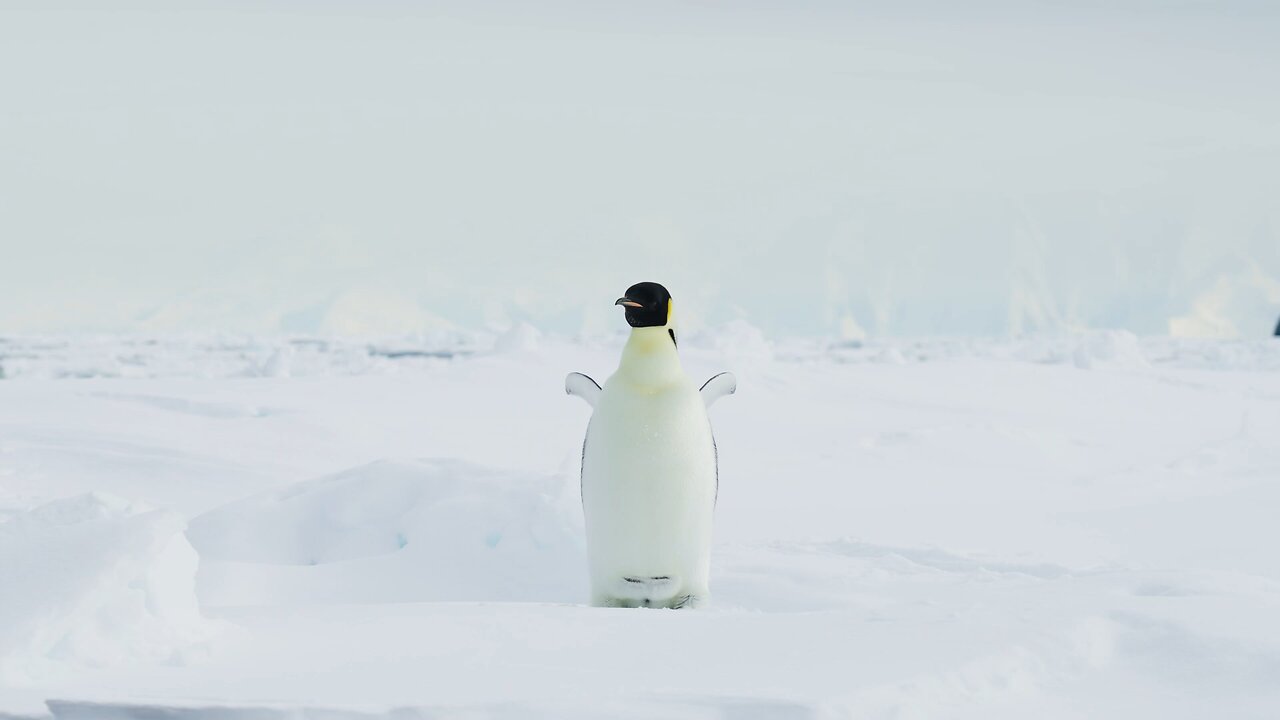Premium Only Content

Emperor penguin, Coulman Island, Antarctica 4K
Emperor penguin, Coulman Island, Antarctica 4K
Blagoj Klincharski
28
Likes
804
Views
22 Feb
2023
The emperor penguin (Aptenodytes forsteri) is the tallest and heaviest of all living penguin species and is endemic to Antarctica. The male and female are similar in plumage and size, reaching 100 cm (39 in) in length and weighing from 22 to 45 kg (49 to 99 lb). Feathers of the head and back are black and sharply delineated from the white belly, pale-yellow breast and bright-yellow ear patches.
Like all penguins, it is flightless, with a streamlined body, and wings stiffened and flattened into flippers for a marine habitat. Its diet consists primarily of fish, but also includes crustaceans, such as krill, and cephalopods, such as squid. While hunting, the species can remain submerged around 20 minutes, diving to a depth of 535 m (1,755 ft). It has several adaptations to facilitate this, including an unusually structured haemoglobin to allow it to function at low oxygen levels, solid bones to reduce barotrauma, and the ability to reduce its metabolism and shut down non-essential organ functions.
The only penguin species that breeds during the Antarctic winter, emperor penguins trek 50–120 km (31–75 mi) over the ice to breeding colonies which can contain up to several thousand individuals. The female lays a single egg, which is incubated for just over two months by the male while the female returns to the sea to feed; parents subsequently take turns foraging at sea and caring for their chick in the colony. The lifespan is typically 20 years in the wild, although observations suggest that some individuals may live to 50 years of age.
Coulman Island is an ice-covered island in the Ross Sea, located 14 km (8.7 mi) southeast of Cape Jones, Victoria Land, Antarctica. It is 33.3 km (20.7 mi) long, 14.8 km (9.2 mi) wide and 6,562 ft (2,000 m) in elevation. Emperor penguins inhabit this island. It was discovered in 1841 by Sir James Clark Ross who named it for his father-in-law, Thomas Coulman. A notable landmark of this island is Cape Anne, the south-easternmost point of the island, so named by Sir James Clark Ross for his wife. Cape Wadworth is the northernmost point of the island.
The island is composed of several overlapping shield volcanoes that form part of the Hallett Volcanic Province of the McMurdo Volcanic Group. A 5 km (3.1 mi) wide and 700 m (2,300 ft) deep caldera called the Hawkes Heights can be found on the south end of the island.
-
 4:22:46
4:22:46
Right Side Broadcasting Network
1 day agoLIVE REPLAY: President Trump Holds a Rally in Kinston, NC - 11/3/24
340K25 -
 1:30:19
1:30:19
Professor Nez
17 hours ago🚨SPECIAL GUEST: Trump HANDPICKED Him from CROWD Leaving Secret Service STUNNED!
122K336 -
 1:31:39
1:31:39
ACTIVE MEASURES
17 hours agoACTIVE MEASURES Ep. 20: Smell-ection Special
94.7K6 -
 17:16
17:16
DeVory Darkins
1 day agoSwing Voters BLOW UP on Kamala with BOMBSHELL Warning
90.4K111 -
 1:01:08
1:01:08
Athlete & Artist Show
1 day ago $6.86 earnedHigh Stakes Sports Betting On WINZ
68.6K1 -
 1:53:48
1:53:48
The Quartering
17 hours agoKamala Harris SNL Disaster, Democrats MURDER A Squirrel, Polymarket Nonsense & More
154K145 -
 18:03
18:03
Stephen Gardner
17 hours ago🔥BREAKING: Supreme Court Trump Ruling EXPLAINED + Kamala in FCC trouble!
139K475 -
 14:20
14:20
CapEx
23 hours ago $16.98 earnedThe HATED Industry that Produces 30% of the World's Electricity: What the West Gets WRONG About Coal
89K28 -
 5:03:54
5:03:54
Right Side Broadcasting Network
1 day agoLIVE REPLAY: President Trump Holds a Rally in Lititz, PA - 11/3/24
254K30 -
 6:06:54
6:06:54
Boogin
20 hours agoLeveling, crafting, learning the game, DPS
109K2